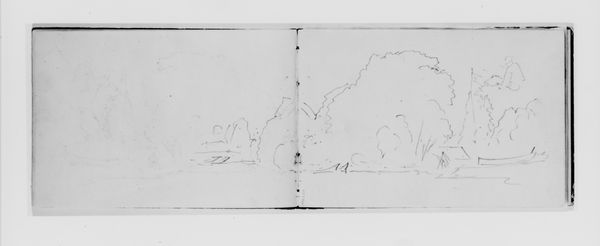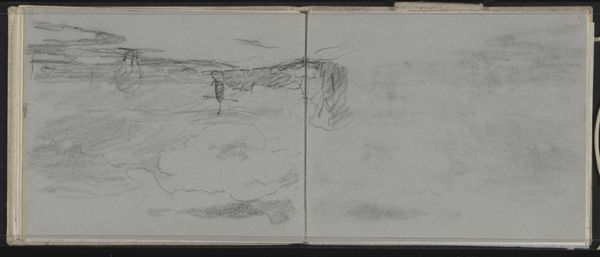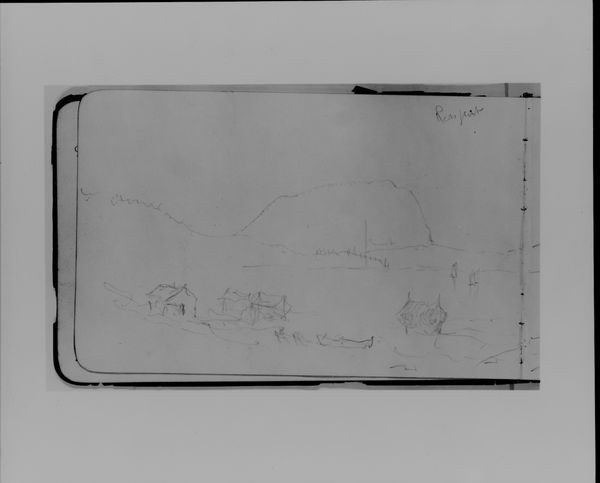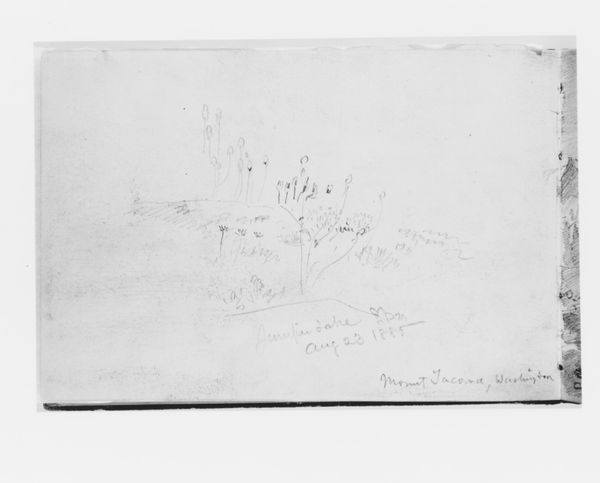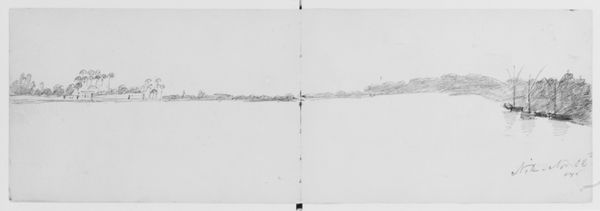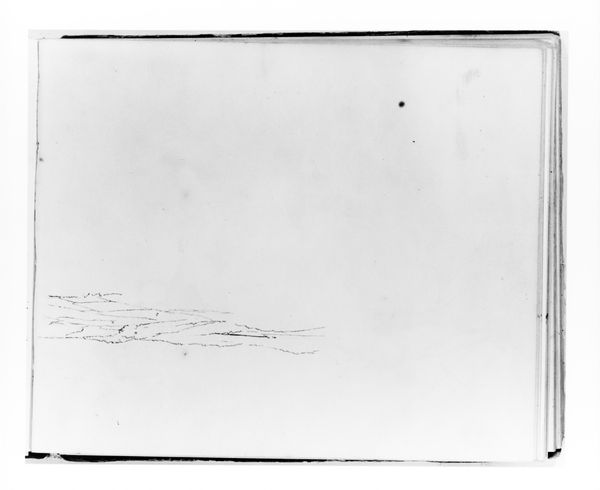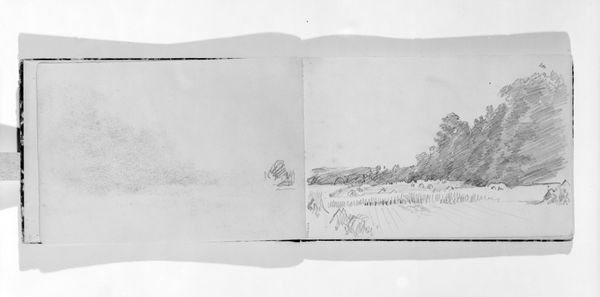
Dimensions: 4 1/2 x 9 in. (11.4 x 22.9 cm)
Copyright: Public Domain
Curator: This is “Landscape with Ruins (recto, from sketchbook)" by Jervis McEntee, created in 1869. It’s a graphite drawing on paper currently residing here at the Met. Editor: Well, first glance – bleak. Utterly desolate. Those ruined structures stand so starkly against what looks like a featureless landscape. It’s quite affecting. Curator: I think you’ve hit on something important. McEntee, despite dabbling in realism, was heavily influenced by the Romantic movement. His interest was in evoking emotion through imagery, often melancholy, particularly relating to time and change. Editor: The ruins as physical manifestations of historical decay... I can see that. Tell me, what sort of paper and graphite would an artist of this period typically use? Was drawing viewed as a primary activity, or more preparatory to painting? Curator: Artists in the mid-19th century had access to a fairly consistent range of paper types, often laid or wove paper made from cotton or linen rags. As for the graphite, options were similar to what's available today but less refined and quality was variable, often mined as whole chunks then carefully carved into sticks or pencils. The rise of sketching societies speaks volumes about its value – artists could refine skills without investing significantly in production. Editor: You make an excellent point about these artistic networks. And considering the prevalence of sketchbooks in academic training during this era, it speaks to the institutional support that was emerging around landscape as a respectable, profitable genre. What do you think the location is here? It does not say... was it based on site sketches? Curator: McEntee kept extensive sketchbooks and likely sketched outdoors often. Although impossible to definitively pinpoint the depicted location, the style does suggest familiar terrain for the artist, and that the image had been constructed around available materials, so local terrain. This connects to a shift towards landscape art’s validation that really cemented the field in the mainstream art market by that time. Editor: It's so interesting how a simple sketch can reveal so much about artistic practice and the cultural landscape. I was really drawn to the piece's stark mood. It looks like an artwork to capture mood but in the means it gives insight on art's cultural and political importance at the time too. Thank you for shedding light on this artist!
Comments
No comments
Be the first to comment and join the conversation on the ultimate creative platform.


